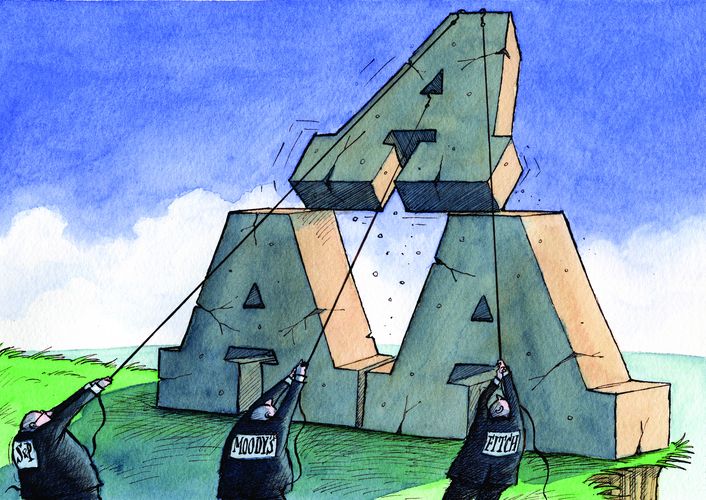Investors have frequently fallen into the trap of viewing the Triple A label as the equivalent of a capital guarantee. Being less sophisticated, retail investors have been particularly susceptible to this. In the extended bull market that finally ended in the summer of 2007 this illusion looked increasingly like reality and investors had no reason to question the system that was bringing them consistent financial rewards.
The market can be a cruel teacher, and in the second half of 2007 and into 2008 it became a fearsome disciplinarian indeed, caning over-exuberant investors with little discrimination or mercy. Rating agencies know they must supplement this painful education with something gentler, but equally necessary: a kind of educational version of the good cop/bad cop routine.
It would be wrong to imply retail investors were alone in their exuberance in treating Triple A like a sure thing. Monolines have been sucked into the epicentre of this financial storm and should surely have known better. The fact some took the rational decision to avoid the Triple A insurance bonanza – with considerable consequences to their P&L – proves the problems the rest have experienced were entirely avoidable.
While the agencies concede they were caught flatfooted by the magnitude of the credit deterioration when it hit, and the effect it had on many of the structured products they had rated, they have tended to accept only a portion of the blame. The rest lies elsewhere: with investors who should have read the signals in the market better; and with auditors and bankers, who were responsible for ensuring structured products were what they pertained to be.
A harsh interpretation of the last 12 months is that it is a kind of financial Darwinism: investors who can’t distinguish between US Treasuries and CPDOs beyond both being Triple A have no future in the financial jungle and must be allowed to die out.
For those with a greater sense of optimism about the future of structured product investors, the agencies’ lesson must be to better communicate exactly what their ratings mean, which, a little confusingly, differs between them. The pressure on them to make sweeping changes is gaining intensity: the Bank of England has endorsed propositions by the agencies themselves to add suffixes to structured product ratings, to distinguish them from “normal” entities like governments or supras. But the European Securitisation Forum and Securities Industry & Futures Markets Association have come out against the plan, warning it would scare investors away from structured products and devalue Triple A equivalent ratings for such products.
Investors have been calling for the ratings to take into account potential liquidity constraints and while each of the rating agencies has accepted the need to thoroughly review their own services, they stress a holistic picture of risk is impossible to paint. Liquidity constraints are particularly difficult to capture, especially while maintaining the simplicity of the current rating methodology. There is, however, scope for improvements to their service, the agencies say, for example better indicators as to the probability of a change of rating.
No doubt the industry will emerge from the current crisis a wiser and more mature business than it was in early 2007.
